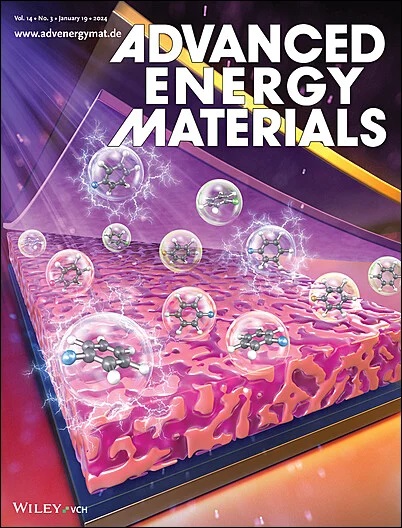具有优异稳定性和高能量密度的稳健钠离子电池阳极的原子尺度界面工程
IF 24.4
1区 材料科学
Q1 CHEMISTRY, PHYSICAL
引用次数: 0
摘要
在追求高性能钠离子电池的过程中,如何在提高界面动力学的同时保持传统硬碳阳极的结构完整性一直是一个巨大的障碍。本研究提出了一种开创性的熔盐辅助合成锰单原子,该原子锚定在具有独特的不对称Mn-O3-N结构的分层多孔硬碳纳米片(Mn-PHCS)内。通过原子级界面工程,硬碳的局部电子结构被复杂地调制,加速了界面电荷转移并促进了快速的伪电容反应。密度泛函理论计算进一步验证了Mn-O3-N活性中心细化了电极-电解质界面,催化受控NaPF6分解,促进了富无机(naf为主)固体-电解质界面层的形成。Mn-PHCS精细的原子结构导致了令人印象深刻的419 mAh g - 1的可逆容量,在1 a g - 1下1000次循环后的稳定容量保持率为94.3%,并且在5 a g - 1下超过7500次循环寿命。当钠离子电池与Na3V2(PO4)3阴极配对时,获得了令人信服的能量密度269.2 Wh kg−1。这项工作不仅阐明了原子尺度界面工程与电化学性能之间的复杂关系,而且为下一代储能系统的发展提出了变革原则。本文章由计算机程序翻译,如有差异,请以英文原文为准。

Atomic-Scale Interface Engineering for Robust Sodium-Ion Battery Anodes with Superior Stability and High Energy Density
In the quest for high-performance sodium-ion batteries, the enduring dilemma of enhancing interfacial kinetics while preserving structural integrity in conventional hard carbon anodes has remained a formidable barrier. This study presents a groundbreaking molten salt-assisted synthesis of manganese single atoms anchored within hierarchically porous hard carbon nanosheets (Mn-PHCS) with a unique asymmetric Mn–O3–N configuration. Through atomic-level interface engineering, the local electronic architecture of hard carbon is intricately modulated, expediting interfacial charge transfer and fostering rapid pseudocapacitive reactions. Density functional theory calculations further validate that the Mn–O3–N active centers refine the electrode–electrolyte interface, catalyze controlled NaPF6 decomposition, and facilitate the formation of an inorganic-rich (NaF-dominated) solid-electrolyte interphase layer. The meticulous atomic configuration of Mn-PHCS results in an impressive reversible capacity of 419 mAh g−1, a robust capacity retention of 94.3% after 1000 cycles at 1 A g−1, and an extraordinary cycle life exceeding 7500 cycles at 5 A g−1. The sodium-ion full cell, when paired with Na3V2(PO4)3 cathode, achieves a compelling energy density of 269.2 Wh kg−1. This work not only elucidates the intricate relationship between atomic-scale interface engineering and electrochemical performance but also sets forth a transformative principle for the development of next-generation energy storage systems.
求助全文
通过发布文献求助,成功后即可免费获取论文全文。
去求助
来源期刊

Advanced Energy Materials
CHEMISTRY, PHYSICAL-ENERGY & FUELS
CiteScore
41.90
自引率
4.00%
发文量
889
审稿时长
1.4 months
期刊介绍:
Established in 2011, Advanced Energy Materials is an international, interdisciplinary, English-language journal that focuses on materials used in energy harvesting, conversion, and storage. It is regarded as a top-quality journal alongside Advanced Materials, Advanced Functional Materials, and Small.
With a 2022 Impact Factor of 27.8, Advanced Energy Materials is considered a prime source for the best energy-related research. The journal covers a wide range of topics in energy-related research, including organic and inorganic photovoltaics, batteries and supercapacitors, fuel cells, hydrogen generation and storage, thermoelectrics, water splitting and photocatalysis, solar fuels and thermosolar power, magnetocalorics, and piezoelectronics.
The readership of Advanced Energy Materials includes materials scientists, chemists, physicists, and engineers in both academia and industry. The journal is indexed in various databases and collections, such as Advanced Technologies & Aerospace Database, FIZ Karlsruhe, INSPEC (IET), Science Citation Index Expanded, Technology Collection, and Web of Science, among others.
 求助内容:
求助内容: 应助结果提醒方式:
应助结果提醒方式:


